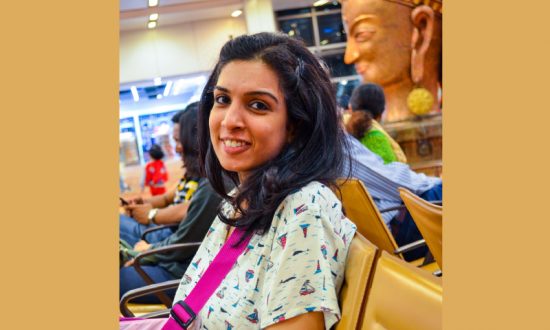With a structured educational approach and single-minded objective of promoting creativity and open-mindedness, Sneha seeks to enhance bright young minds through the medium of Art. She has 13 years of experience in the classroom that has helped her create a personalized pedagogical technique. Through her classes, she combines artistic ability with imaginative thinking, collaboration and organizational skills. She empowers every creative mind to find its space.
“Every Child is an Artist. The problem is how to remain an Artist Once we grow up.” -Pablo Picasso
The above quote by famous artist Picasso says a lot about how Visual Art is treated in the modern world. Visual Art is considered as an option in the Indian Education System and is often underesitimated. Worsening the condition in 2020, was the Digitalisation of Education which resulted in Visual art suffering a sudden abandonment. It was shifted back, with a tag of extra-curricular, thus not so important. The academics stood in limelight during online classes. The Abandonment happened at the time when it was needed most. Pandemic, lockdown and sudden shift from physical to digital classrooms impacted students both mentally and physically. Unfortunately, the Education system went inconsiderate towards the role played by Visual Art in the holistic development of students. We failed to recognize in these times that art is approachable and cheaper than therapy!
At First, I as an individual struggled to make my parents understand my fondness for Visual Art. And now as an Art Educator, I struggle to make my student’s parents understand their child needs to have indulgence in Visual Art for holistic development. The struggle is real and seems long, but, not impossible! The shift from Abandonment to Acceptance is happening in our education system and society. All thanks to the New Education Policy, we are on the first step of the ladder to Recognise the importance of Visual Art.
Undoubtedly, Visual Art is an important subject that leads to the overall development of students. The hidden lessons lead students in discovering their hidden potential and learning some life-saving skills. Some skills visual arts teaches us are:
-It helps in the communication of ideas.
– It helps in the exploration of imagination power and the development of artistic & creative skills.
– It gives freedom of expression.
-It improves motor skills.
-It develops skills to analyze, appreciate and criticize.
-It is meditative and supports good mental health.
As an Art Educator for nearly 13 years, working with budding artists of different age groups has made me feel that an art room is an art lab that promotes experimenting in the students. Thus, bringing a new creation every time. Teaching arts follows both hands on & off approach. Wherein, thorough information about the subject and demo of skill technique helps students to explore, innovate and create. In this process, the students have to climb all steps of the ladder that take them to their final creation. The students get indulged in activities like:
-Understanding
-Researching
-Collaborating
-Innovating
-Experimenting
-Creating
-Analysing
It is after going through all these steps, students are able to create something of their own, something unique and original. In this journey, one may see how Visual Art is developing their curiosity, communication skills, thinking skills, problem solving skills, desire to innovate & create. These developments are further giving them freedom of expression, skills to analyse, appreciate and criticise. They also acquire strong concentration, patience, and team work. And not to forget Good Mental Health!
So, you see Visual Art is one wholesome platter that serves holistic growth and development to students.
Art is not a thing, it’s a way.
Here is one more question, under the blanket, what pedagogy, Educators should employ to serve a wholesome platter of Visual Art?
In our traditional methods, Art classes were to relax, to draw what is drawn on the blackboard, with silence in class. It was more for those who enjoyed and were good at Art. It was one-way communication. Just like we get copies from the Xerox machines. It left no scope of research, idea generation, brainstorming, and expression. As someone who was taught through the traditional methods, my deep-rooted interest in Art, helped me to keep the spirit of exploring and innovating alive. When I changed my role from a Student to an Educator, I kept myself on the same path of exploring, innovating, and developing the same in my students. Today all over the world, educators are waking up to the fact; the new age is of visual age, where students must learn and think in new ways. Art education needs to be approached in a more structured manner, contemporary pedagogy with interactive communication in Art rooms. We, the educators and parents need to make them observant enough to learn from patterns and shapes around. Curious, to delve deeply into the subject and history. Innovative, to experiment and create their own version of Art. Expressive, to be able to express their creation and journey behind, both by speaking and writing. India has an advantage due to our rich tradition of Art. We have so much around us to stay inspired from patterns on our clothes we wear to homes we stay in!




